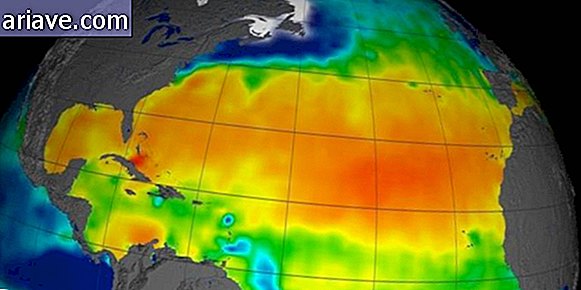Antarctica's Blood Waterfall Mystery Has Finally Been Solved
Have you ever heard about the blood waterfalls that exist in Antarctica? We at Mega Curioso have already talked briefly about this intriguing place here - you can check out the full story via this link - located on Taylor's Glacier. As you can see from the image above, the waterfalls stand out a lot from the white landscape and really give the impression that rivers of blood are running down the ice.

As explained in the article, due to the high salt concentration, the glacier is not frozen near the rock on which it lies, and scientists believed that the intense coloration of water was caused by the oxidation of iron.
More precisely, the researchers found that there is a saltwater pocket that was blocked millions of years ago by a glacier, and in this subterranean lake formed a rare ecosystem composed of bacteria capable of metabolizing sulfur and iron ions from the water, resulting in the red color of the waterfall. However, no one could explain for sure what kept the water flowing - when it should freeze - nor what had been feeding the waterfall all along.
Mystery solved
Now a team of researchers at the University of Alaska Fairbanks and Colorado College say they have solved the mystery. Scientists used a type of radar to detect what was feeding the waterfall and found that water flows through a series of deep channels that exist in the ice.

Scientists have also found that this system serves to force water from subglacial caves to the outside, and that the liquid probably comes from a huge reservoir of seawater that was blocked from the ocean and covered by the glacier millions of years ago. The researchers explained that iron and other sediments seep into the reservoir, and only a small amount of water ends up flowing through the waterfall.
Also, according to the researchers, the amount of salt in the water helps explain why it doesn't freeze in such a… freezing environment. According to their estimates, the average ice temperature is - 17 degrees Celsius, and the saline content of the water makes the freezing point around - 7 ° C. It turns out that as water freezes, it loses heat - and that heat needs to go somewhere.
Then, as the system is encased in ice, the lost energy is radiated to the glacier, slightly warming the environment and resulting in the presence of water in liquid form. For, according to scientists, this is probably the process that generates the 10 degrees needed to keep water flowing.
***
Mega is competing for the Digital Influencers Award, and you can help us be double champions! Click here to find out how. Enjoy following us on Instagram and subscribe to our YouTube channel.











